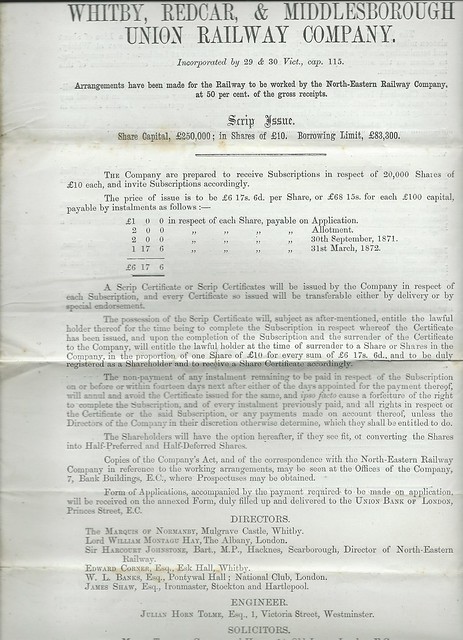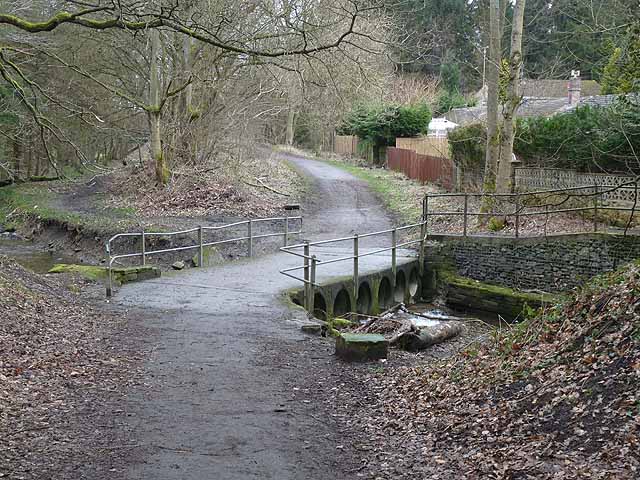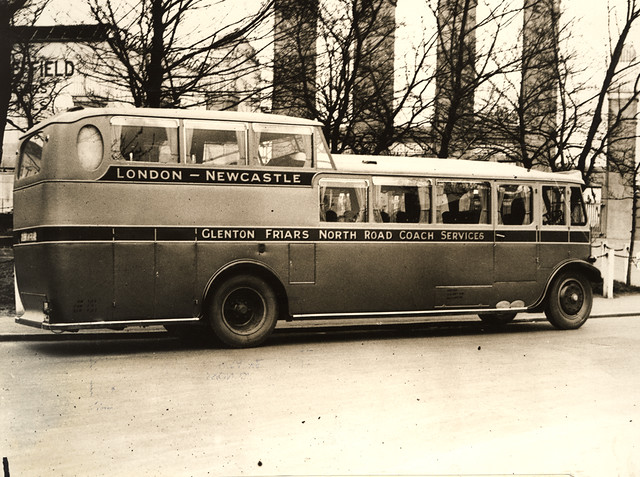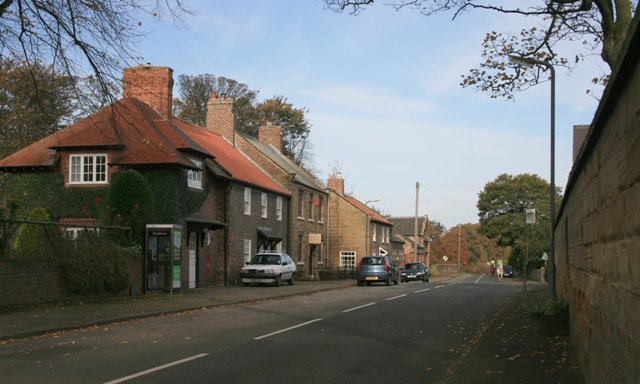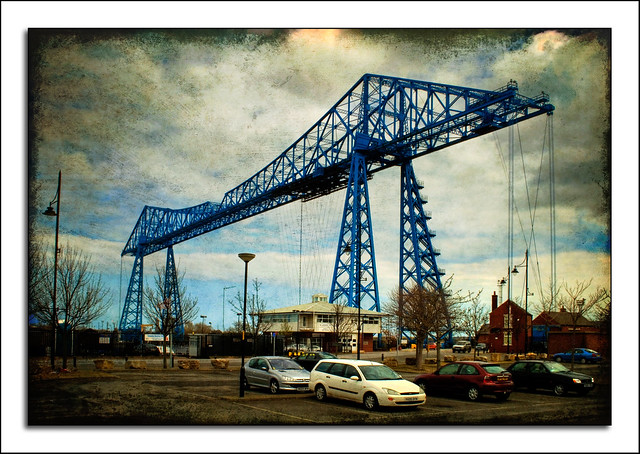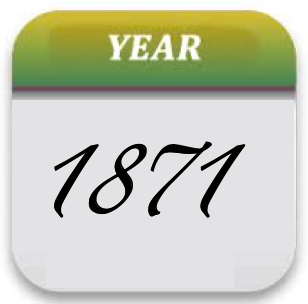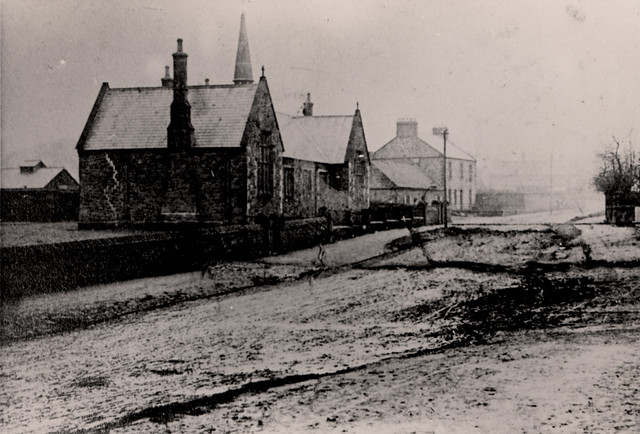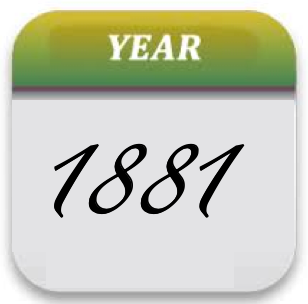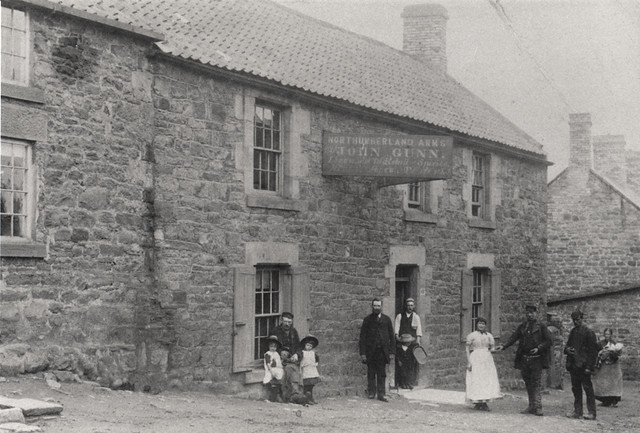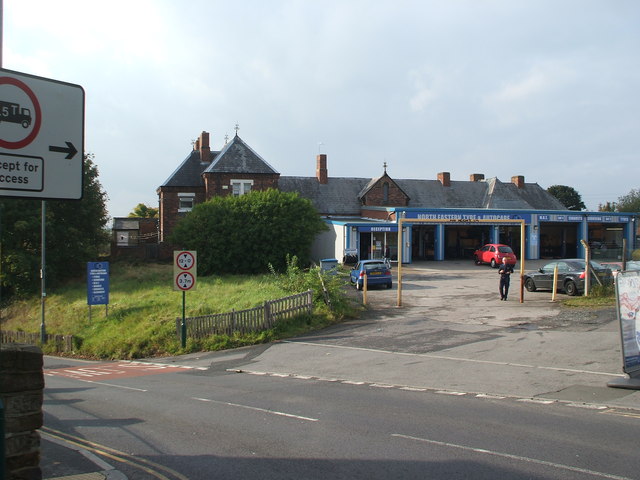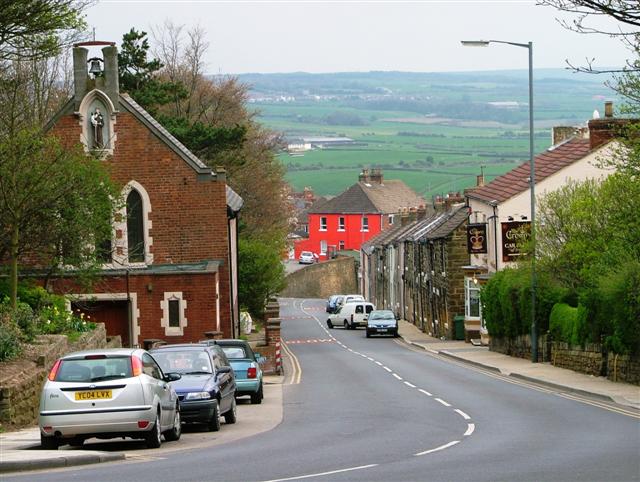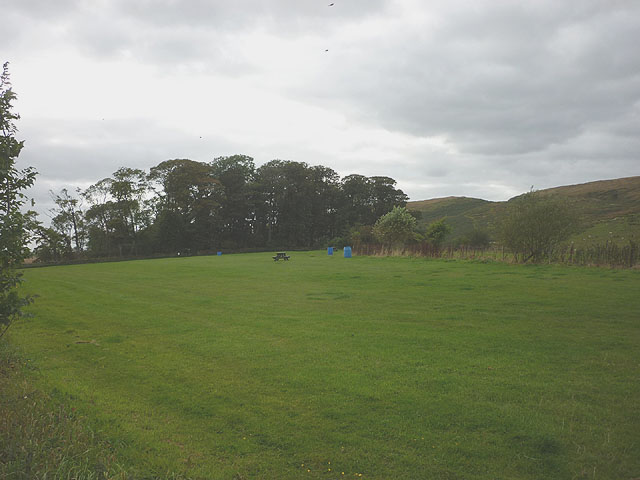Whitby, Redcar & Middlesborough Union Railway Prospectus 1871

-
Description
The Whitby, Redcar and Middlesbrough (note the wrong spelling used in this prospectus written in London) Union Railway (WRMU) was a short lived railway line, running along the North east coast of England from the River Tees at Middlesbrough to the Esk at Whitby, where it met the Scarborough and Whitby Railway line and the Whitby - Pickering railway (Now part of the Esk Valley Line). For much of its journey it hugged the cliffs, and had a troubled build due to the proximity to the sea and poor build quality of the construction on many of the original bridges and viaducts. It was essentially created from two separate sections of railway - From Middlesbrough to Loftus and from Loftus to Whitby (West Cliff). The Loftus to Middlesbrough section has a complex heritage in itself, being built in stages by the Cleveland Railway, the Middlesbrough and Guisborough Railway and the NER. The first section north of Loftus as far as Priescroft Junction, near Brotton was part of a route built to serve the rapidly developing Ironstone industry. The line ran via Nunthorpe (over what is now part of the Esk Valley Line), through Guisborough and on to Loftus with branches to various ironworks and mines along the way. North of this came the Saltburn Extension, opened to goods in 1872, and to passengers in 1875. Originally it had no stations, as its main purpose was for goods traffic, although North Skelton opened in 1902. The line was authorised by an act of parliament in 1866, with the majority of construction by John Dickson from 1871 to 1873. Due to a lack of funds and problems with the original contractor work was suspended on the route until the North Eastern Railway (UK) took up the lease in 1875. John Waddell won the contract, and the line was scheduled to open on 13th July 1881, but due to the extra work required to bring it up to standard, it was two and a half years before the line was finally opened on the 3rd December 1883. Many of the bridges were defective and piers out of vertical. Even the original tunnels were so out of line with each other that when boring was done from each end the would not have met in the centre. Part of the proposed line was so dangerously close to the cliff edge that the NER abandoned it and took a route further inland through Sandsend and Kettleness tunnels. The completed section ran from Whitby to Loftus, where it met the NER Middlesbrough - Loftus route head on. From the beginning the line was run by the North Eastern Railway (UK) who held the lease and who were at that time also running services to Whitby along what is now the Esk Valley Line. The NER took over the line in 1899. By 1958, British Rail claimed that £58,000 worth of maintenance was required to keep the line open (mainly on repairs to the viaducts). With dwindling passengers since the war years, the route was now only popular during summer weekends. The line closed on the 5th May 1958. Only Whitby West Cliff station remained open for another seven years, serving trains from Whitby to Scarborough until it too finally closed on the 6th March 1965. In 1960 work began to dismantle the line, viaducts were sold for scrap metal and concrete was used in the construction of the local sea defences. In the 1970s the northern section of the line was revived after ICI decided to sink Boulby mine for Potash, conveniently located next to the former route, just north of the village of Boulby in Redcar and Cleveland. -
Owner
ian.dinmore -
Source
Flickr (Flickr) -
License
What does this mean? All Rights Reserved (Seek permission to reuse)
-
Further information
Link: https://www.flickr.com/photos/13508441@N03/15593810670/
Resource type: Image
Added by: Simon Cotterill
Last modified: 8 years, 11 months ago
Viewed: 2156 times
Picture Taken: Unknown -
Co-Curate tags
